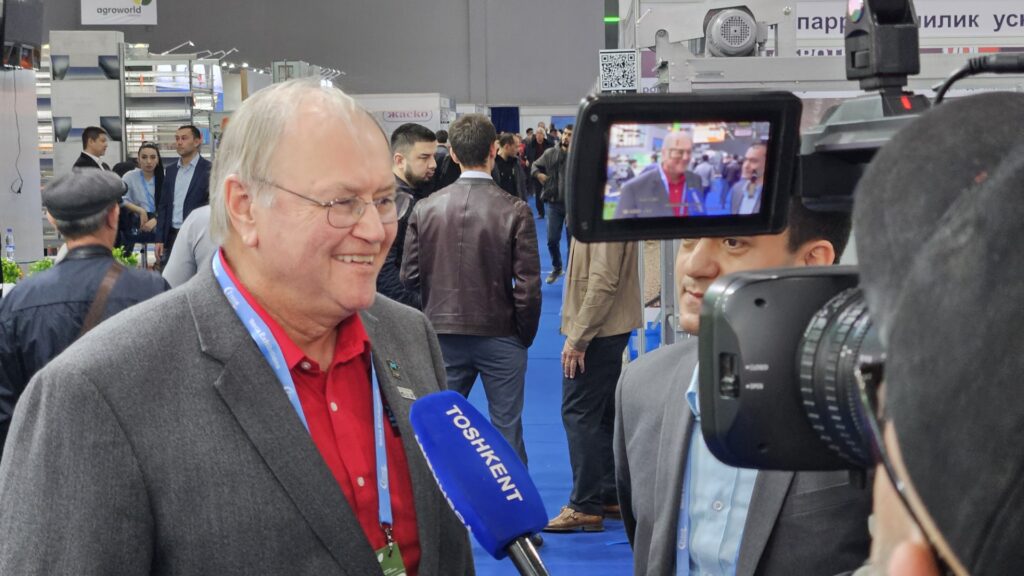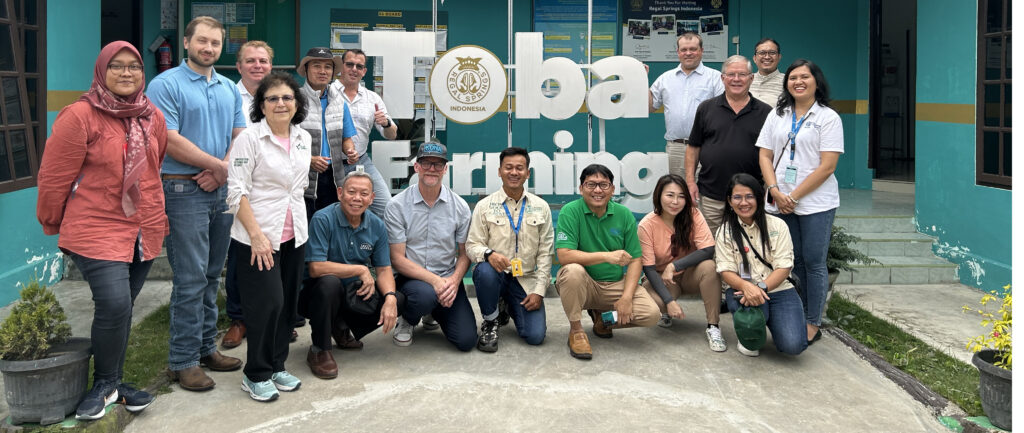The population of Uzbekistan is growing and the tourism industry is exploding; as a subsequent result, the poultry and industry are thriving. Thus, the timing was right for the Minnesota Soybean Research & Promotion Council (MSR&PC) to return to the Central Asian country to continue to build relationships and promote the value of U.S. soy.
Participants during the first trade mission in September 2022 included MSR&PC Directors Patrick O’Leary and Gene Stoel, along with MSR&PC Director of Market Development Kim Nill. This year, Council Chair Tom Frisch and Director Ben Storm also joined the trade mission, which took place March 9-15, 2024.
The farmers leaders had a heavy itinerary on their trade mission through visits with poultry and dairy producers and soybean crush and feed mill operators in and around the city of Samarkand, which is located in central Uzbekistan and known as the cultural capital of the world.
“We had some great meetings and had the opportunity to learn about their facilities and their businesses, and at the same time showed them the value of using U.S. soy products,” said O’Leary, who farms in Benson.
In addition to their time is Samarkand, the group of farmer leaders traveled to the Uzbekistan capital of Tashkent, where they visited with the US Ambassador in Uzbekistan Jonathan Henick. The ambassador met privately with MSR&PC directors prior to the Agro World Expo and then invited them to participate in a roundtable discussion and traditional Iftar dinner at his residence later that evening.
“We are very grateful for the amount of time the Ambassador spent with us. He was very receptive,” said MSR&PC Chair Tom Frisch. “We had great discussions about some of the logistical hurdles we still have for bringing soybeans from the US to Uzbekistan and some of the ways he could help us.”

Uzbekistan currently imports roughly 300,000 metric tons of soybean meal annually, most of which comes from Kazakhstan and Argentina, but the actual demands indicate they could use upwards of 1.2 million tons. The numbers are only the beginning with a population growth across the country at 2% and tourism expecting to hit a record 10 million visitors this year.
MSR&PC farmer leaders first fact-finding mission to Uzbekistan focused on learning more about the needs of the country and the potential for bringing in U.S. soy to increase their animal productivity. This most recent trade mission, according to Stoel, was all about seeing the progress they’ve made and connecting the producers together as potential soy purchasers.
“There was a lot of skepticism the first time around about whether or not we were really there to help, but we brought in an animal nutrition expert to provide assistance and it’s paid off by improving their practices and profitability,” Stoel said. “They know now that we’re about more than just selling them soybeans.”
Joining MSR&PC on the trade mission was the aforementioned animal nutrition expert, Dr. Abdolreza Kamyab, who received his Ph.D in Poultry Nutrition & Management at the University of Minnesota. Dr. Kamyab was hired by MSR&PC to provide technical assistance to Uzbekistan poultry producers for the purpose making animal management and facility improvements so that they can maximize their profitability when the U.S.-origin soy arrives.
“The best quality and most protein come from U.S. soybeans, that is without question. The return on investment is far greater,” said Dr. Kamyab during a visit with ag faculty at the Samarkand Institute of Technology.
A growing ag industry
Along with countless meetings and tours, the farmer leaders were also able to learn about the rich history and unique culture of Uzbekistan. They visited the 15th-century madrasahs and temples in Samarkand, drove up and down the mountains to the birthplace of ancient emperor Amir Timur in Shahrisabz and attended several traditional Iftars, a traditional breaking of the fast feast during the month of Ramadan.
“The country as whole is very beautiful, the people are very nice and food is very good, too. They eat lots of meat, especially beef, lamb, and chicken and they export a great deal of fruits and nuts,” Storm said. “The ag industry is growing quickly and could the use the help of US soy to increase animal productivity.
The Iftar dinners during this trade mission also provided an opportunity for the various soybean users to network and discuss opportunities to work together and options for purchasing the high-quality US soy meal.
“What we learned after getting everyone together was that it wasn’t worth it for these large poultry and dairy operations – some of which use upwards of 120,000 tons of soy meal annually – to purchase a couple containers of soy meal to do a trial run; what they needed was a vessel,” Nill said. “I felt that validated our efforts and made this trip very valuable for Minnesota soybeans.”




